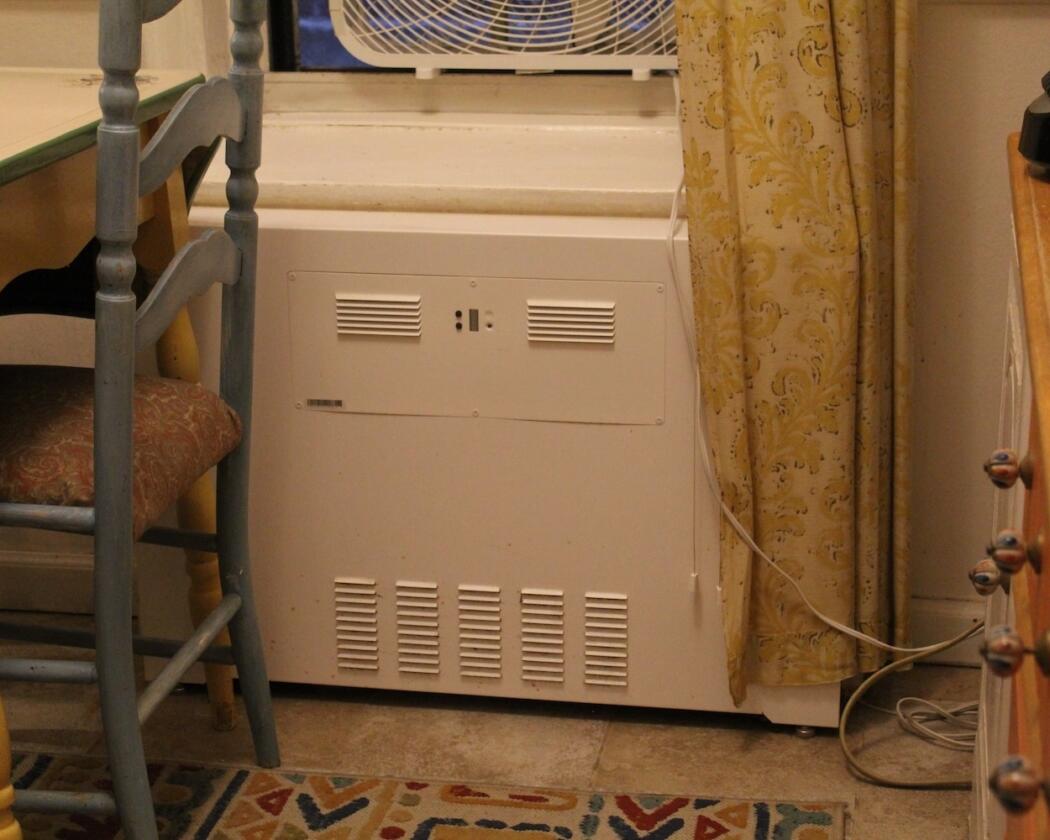
What is a “Radiator Cozy” and how does it work?
Inwood Park Apartments was able to save money on fuel and reduce carbon emissions — all by insulating their in-unit radiators
The Kelvin radiator Cozy sits nestled under the windows inside the units at Inwood Park Apartments. Photo: Ayana Smith
After larger infrastructural interventions proved unworkable, the solution for compliance at Inwood Park Apartments was installing radiator covers known as “Cozys.”
Developed and manufactured by Kelvin, a company that specializes in energy-efficient cooling and heating technologies, the Cozys are “thermostatic radiator enclosures” that offer insulation, as well as more precise temperature controls.
The Cozy is a box fitted to the shape of a building’s cast-iron, baseboard, or recessed radiators, explained Garrett Modeste, a representative from Kelvin. The insulator contains a fan to blow out the heat from the radiator into the room, as well as temperature sensors to monitor the temperature inside the box and the ambient temperature of the room.
Once each room has reached its desired temperature, excess heat remains trapped inside the Cozy. Then the network of thermometers built into the Cozys installed throughout the building digitally alerts the central boiler, which relaxes and cycles less often, or at a less high temperature. The result is less strain placed on central boilers — which creates energy savings for buildings, and more temperature control for residents.
“When somebody says, ‘I wanted it to be 72 degrees,’ [the fan inside] will kick on and start blowing the heat out of that enclosure until the room reaches the set point,” explained Modeste.
Modeste cited a NYSERDA report finding that the Kelvin radiator Cozys have the capacity to reduce carbon emissions by an average of 25.5 percent for buildings. At Inwood Park Apartments in particular, the installation of radiator cozies reduced the building’s carbon emissions by 27 percent.
In addition to increasing a building’s energy efficiency, Cozys can offer particular benefits to those residing in pre-war buildings. For these complexes built between 1920 and 1949, the radiator covers help resolve problems associated with intentional overheating that was built into these radiators’ design.
The design of the Cozy allows tenants to regain a few inches of liveable space within their units — children and pets are protected from the heat of exposed radiators, and plants and fish tanks or terrariums have a comfortable resting spot near sunlight. There is also an opportunity to decorate and repaint the Cozy.
Perhaps most important to Hal Fuchsman, the co-op board president of Inwood Park Apartments, is the data made available by more precise temperature monitoring. “Both [the] Cozy and the heat-timer system provide a wealth of real-time data, and insights that are already proving helpful as we think about our next steps.”
